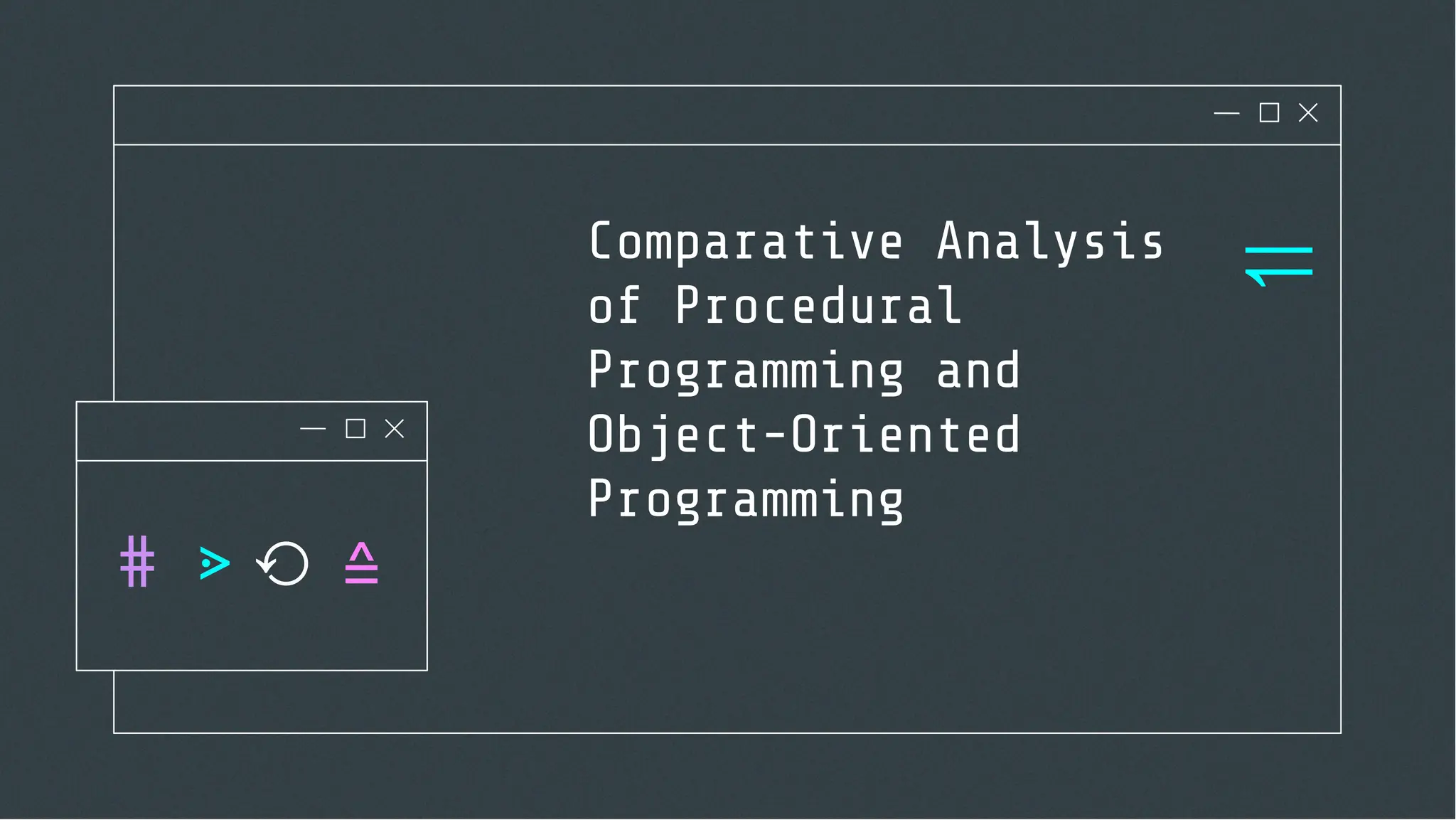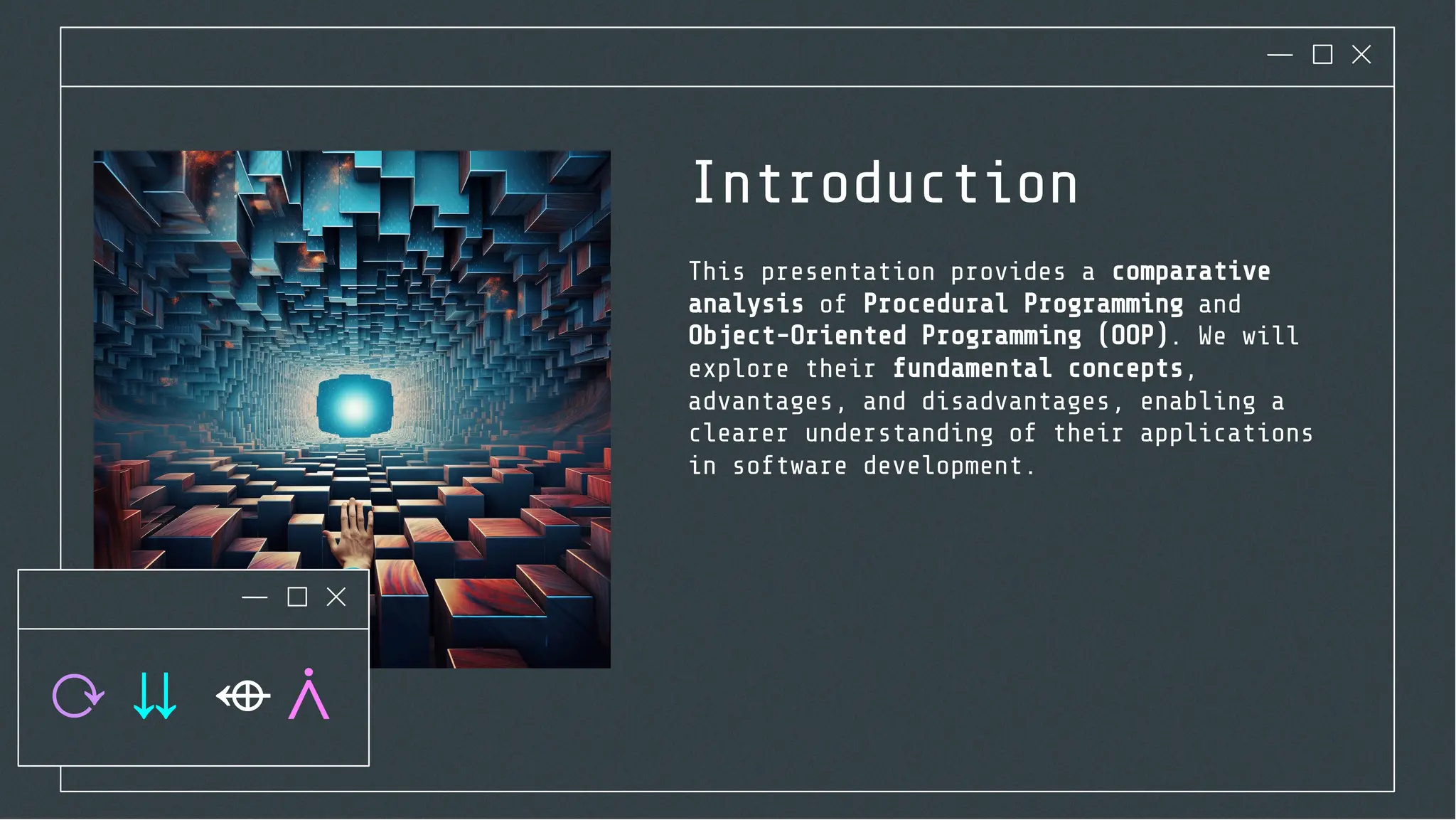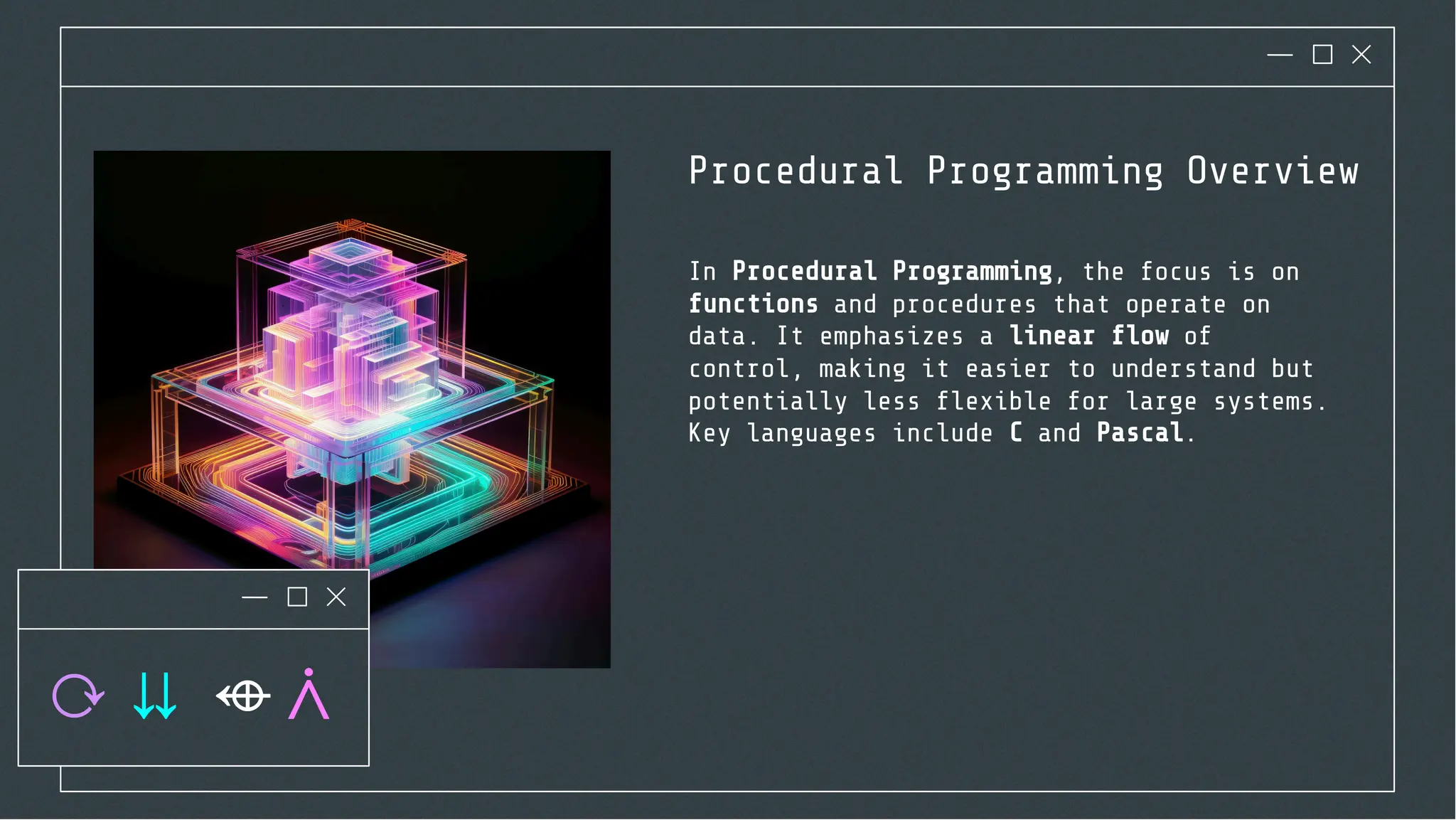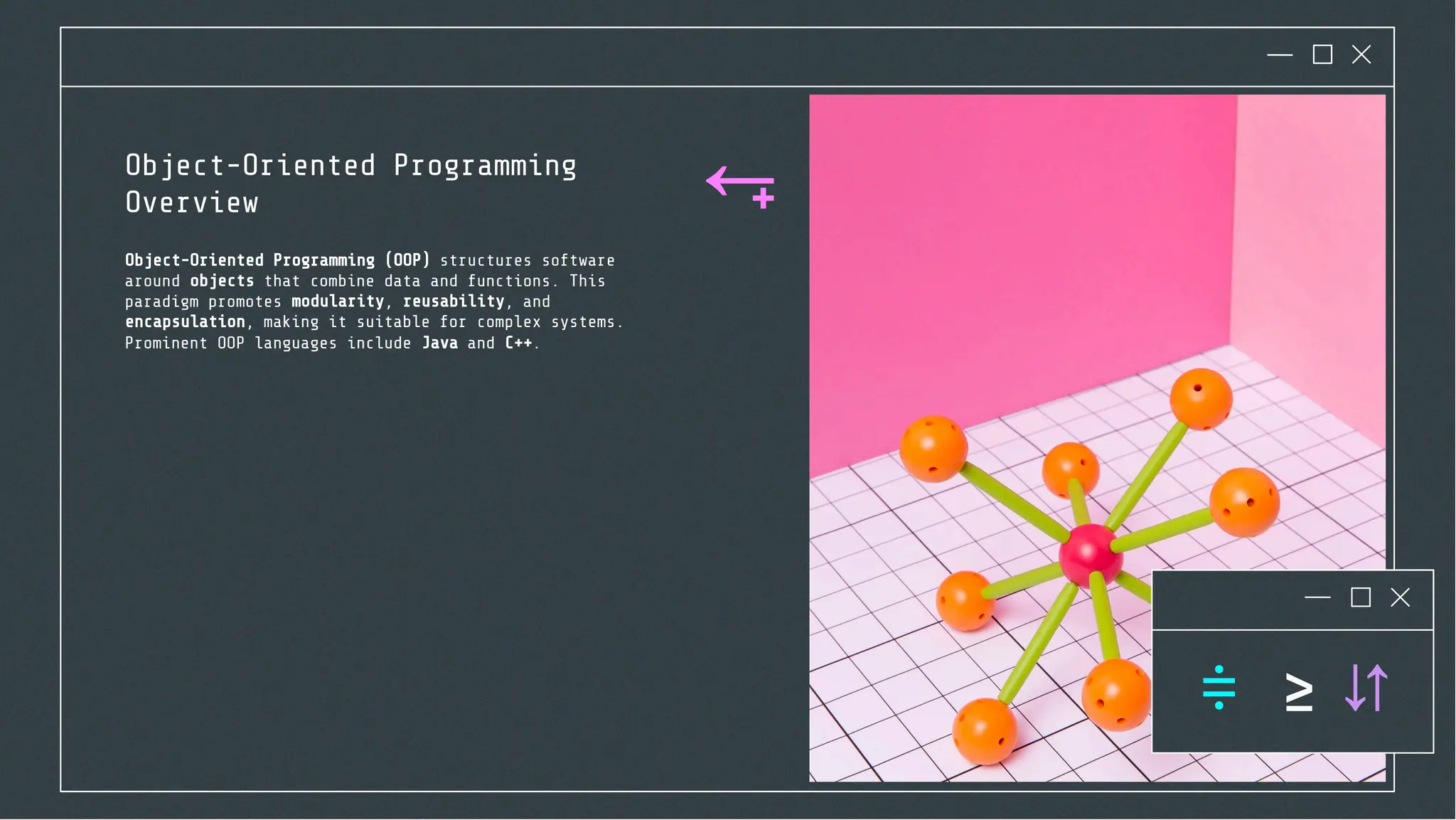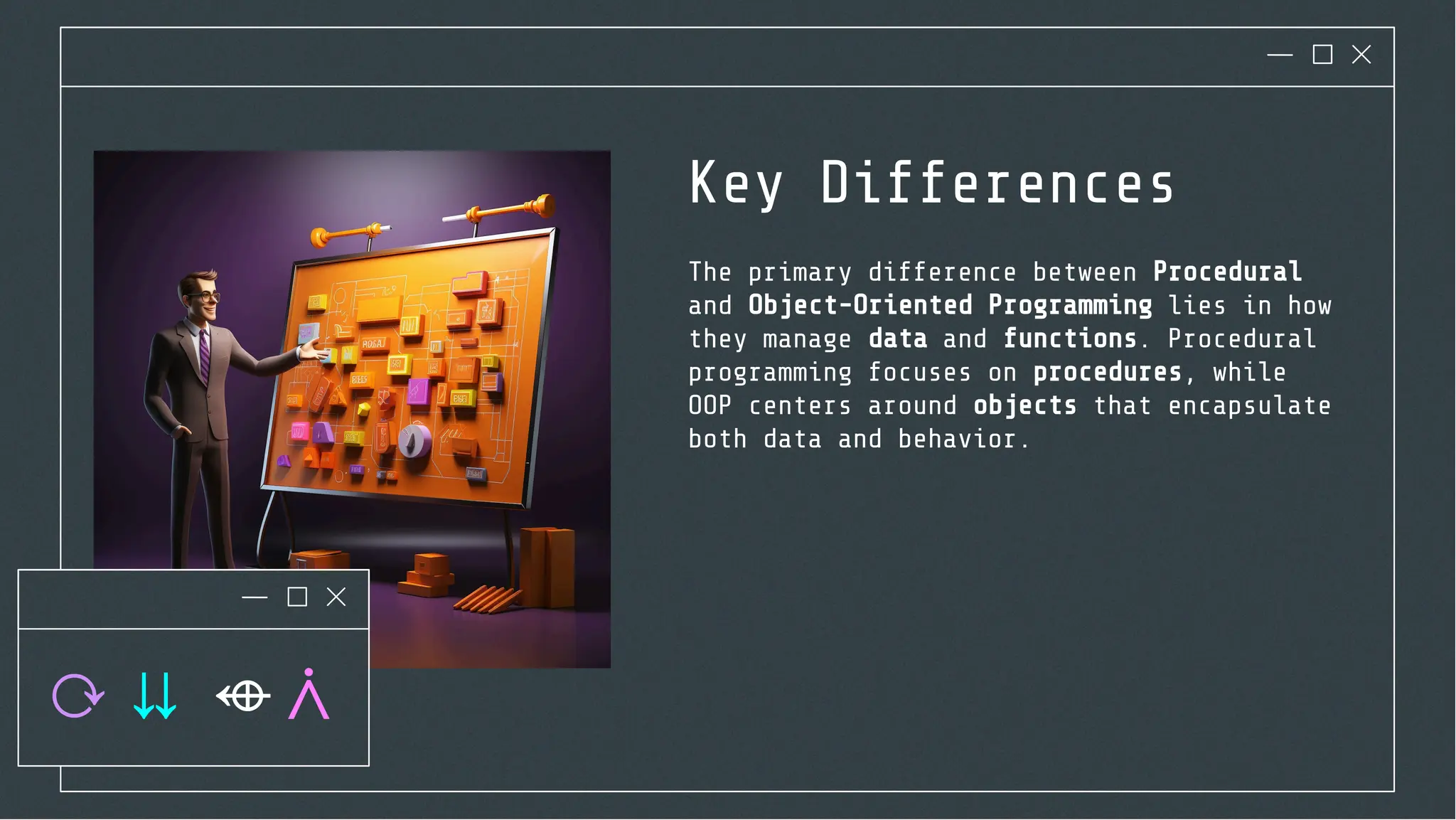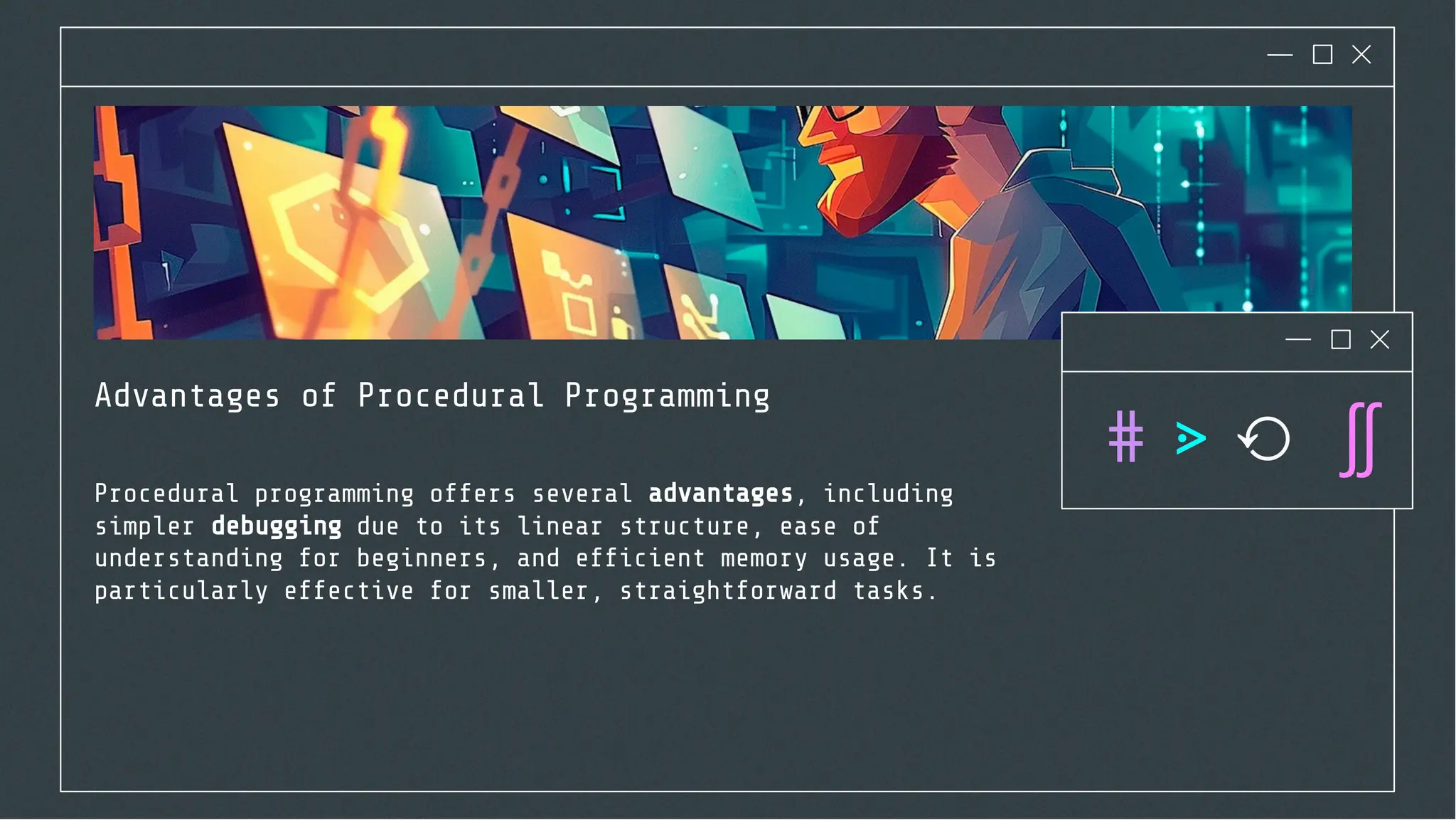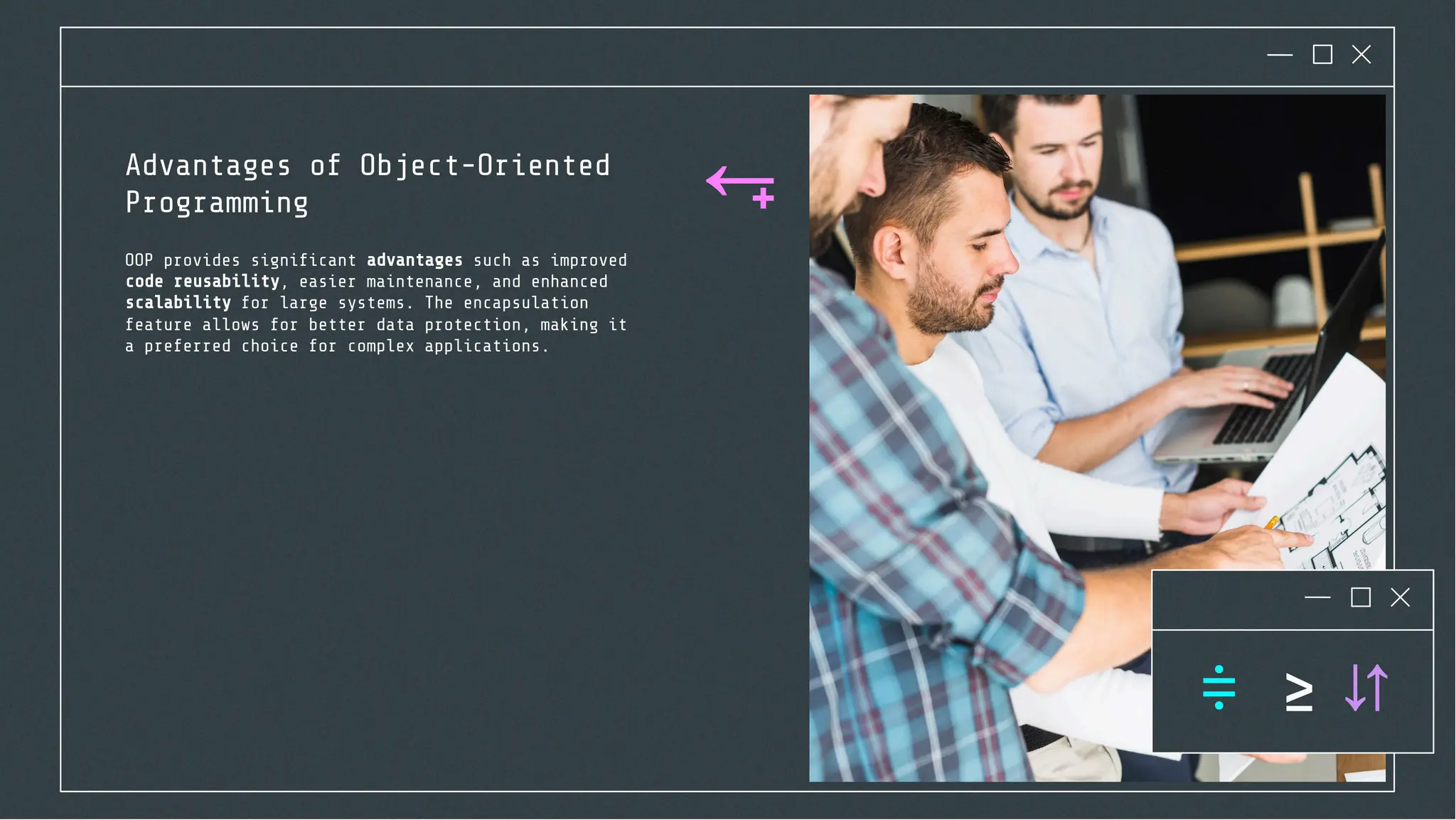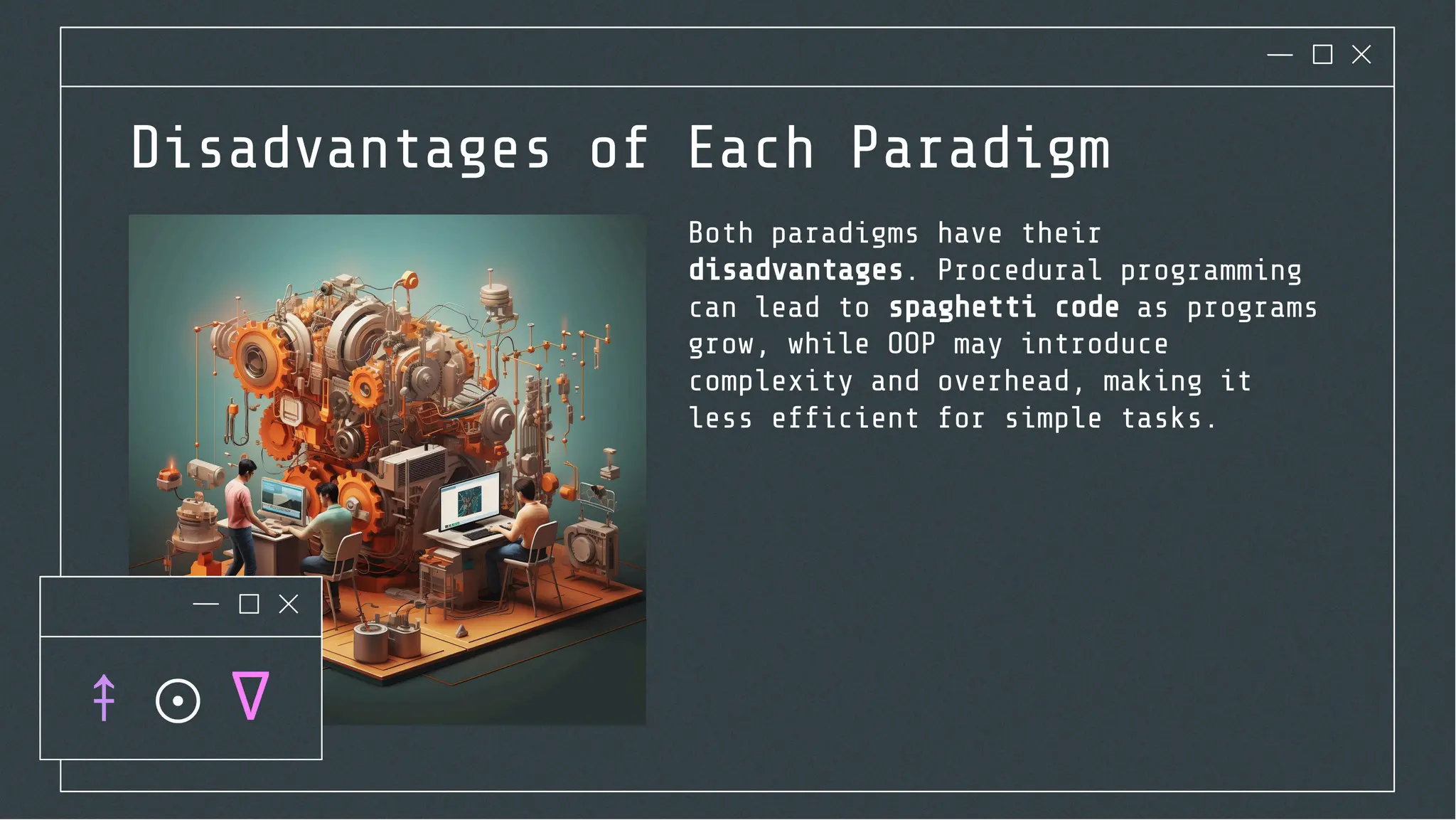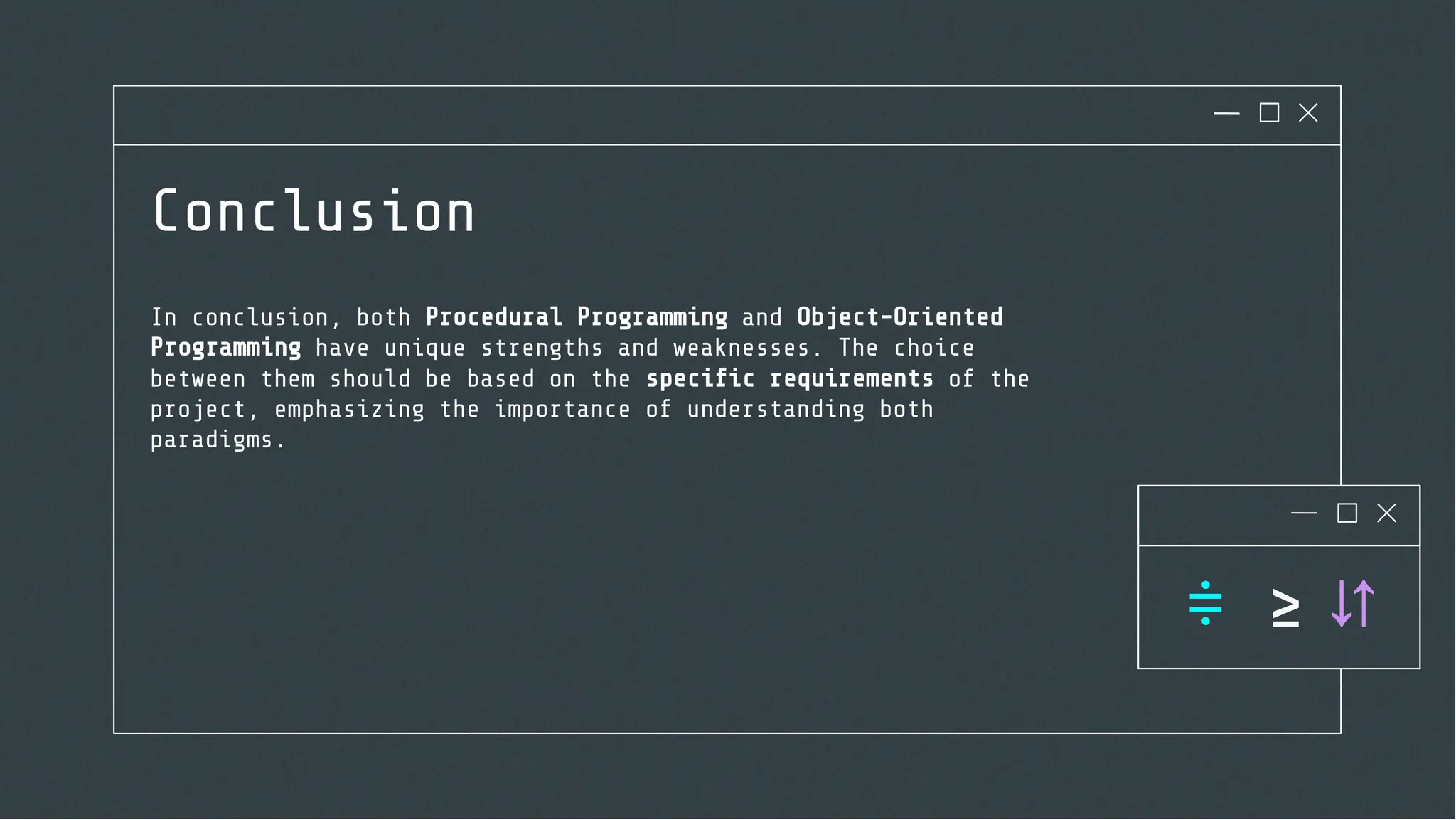This document presents a comparative analysis of procedural programming and object-oriented programming (OOP), highlighting their concepts, advantages, and disadvantages. Procedural programming is function-focused with a linear flow, while OOP centers around objects, promoting modularity and reusability. The document emphasizes that the choice between these paradigms should depend on project-specific requirements.
